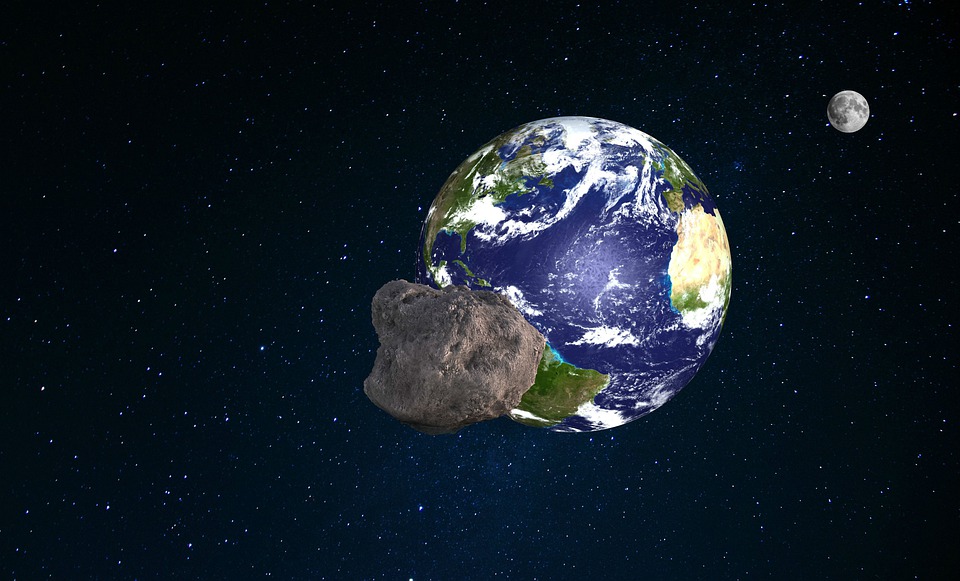NASA’s asteroid trackers spotted an asteroid heading towards Earth at a rapid pace. Scientists predict that this asteroid will be arriving and passing by the planet later this week.
Express reports that asteroid 2012 XA133, named after the year it was first confirmed, is heading Earthbound at a speed of almost 53,000 miles per hour. The rock is on a close-approach trajectory and is predicted to fly past Earth on Friday, the 27th of March, being classified as a Near-Earth Object or NEO. XA133 measures between 590 feet and 1,279 feet in diameter, making it a relatively large rock.
Rocks with that size can likely cause a lot of damage should it collide with Earth. Asteroids that are much smaller will most likely burn up when it reaches the atmosphere. However, there are smaller asteroids that may slip past the agencies’ trackers undetected, such as the 2013 Chelyabinsk incident. Larger asteroids are considered as Potentially Hazardous Objects or PHOs and can cause damage on a global scale should it ever collide with Earth. But, experts have revealed that there is a very slim chance of this scenario actually happening.
Fortunately, when it finally approaches Earth, it will only fly by the planet and get as close as 0.04453 astronomical units. This is equivalent to 6.66 million kilometers, making it incredibly far away but still noticeable enough.
Meanwhile, along with asteroids, a new report reveals that a solar storm will be hitting Earth on Sunday, March 29th. Space forecasters predicted that the planet is in the crosshairs of solar wind. Solar particles escape the surface of the Sun on its southern hemisphere, resulting in a solar wind, which will now be headed to Earth all the way from the sun.
According to Space Weather, “A minor stream of solar wind is expected to hit Earth’s magnetic field on March 29th, possibly sparking Auroras around the Arctic circle. The gaseous material is flowing from a southern hole in the Sun’s atmosphere.”
Auroras is just one of the effects of solar storms. Solar storms can also affect satellite-based technology as well as expanding the Earth’s outer atmosphere.



 Ancient Mars may have had a carbon cycle − a new study suggests the red planet may have once been warmer, wetter and more favorable for life
Ancient Mars may have had a carbon cycle − a new study suggests the red planet may have once been warmer, wetter and more favorable for life  NASA and Roscosmos Chiefs Meet in Florida to Discuss Moon and ISS Cooperation
NASA and Roscosmos Chiefs Meet in Florida to Discuss Moon and ISS Cooperation  Astronomers have discovered another puzzling interstellar object − this third one is big, bright and fast
Astronomers have discovered another puzzling interstellar object − this third one is big, bright and fast  FDA Pilot Program Eases Rules for Nicotine Pouch Makers
FDA Pilot Program Eases Rules for Nicotine Pouch Makers  Tabletop particle accelerator could transform medicine and materials science
Tabletop particle accelerator could transform medicine and materials science  Cogent Biosciences Soars 120% on Breakthrough Phase 3 Results for Bezuclastinib in GIST Treatment
Cogent Biosciences Soars 120% on Breakthrough Phase 3 Results for Bezuclastinib in GIST Treatment  SpaceX’s Starship Completes 11th Test Flight, Paving Way for Moon and Mars Missions
SpaceX’s Starship Completes 11th Test Flight, Paving Way for Moon and Mars Missions  SpaceX Starship Test Flight Reaches New Heights but Ends in Setback
SpaceX Starship Test Flight Reaches New Heights but Ends in Setback  Lab-grown meat: you may find it icky, but it could drive forward medical research
Lab-grown meat: you may find it icky, but it could drive forward medical research  Neuren Pharmaceuticals Surges on U.S. Patent Win for Rare Disorder Drug
Neuren Pharmaceuticals Surges on U.S. Patent Win for Rare Disorder Drug  Lost in space: MethaneSat failed just as NZ was to take over mission control – here’s what we need to know now
Lost in space: MethaneSat failed just as NZ was to take over mission control – here’s what we need to know now  Neuralink Expands Brain Implant Trials with 12 Global Patients
Neuralink Expands Brain Implant Trials with 12 Global Patients  Blue Origin’s New Glenn Achieves Breakthrough Success With First NASA Mission
Blue Origin’s New Glenn Achieves Breakthrough Success With First NASA Mission 































